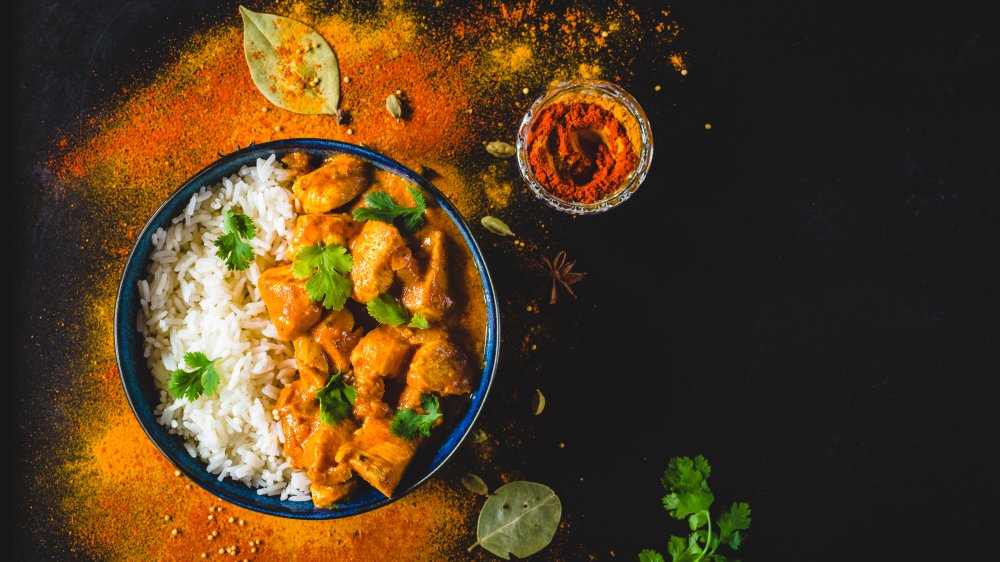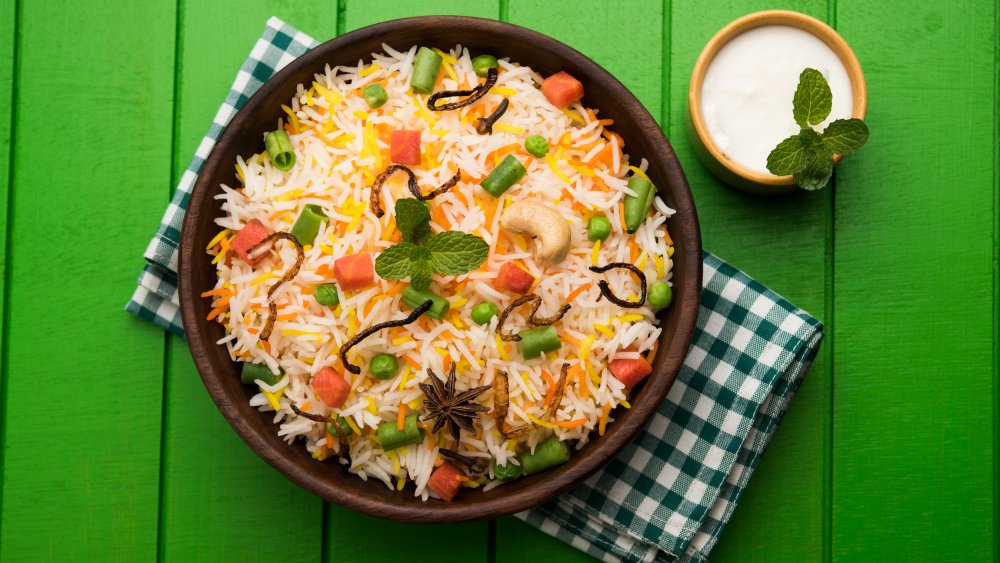The Real Difference Between White Rice And Basmati Rice
If you've ever found yourself in a supermarket aisle, overwhelmed by the array of rice varieties, you're not alone. Before making your choice for dinner, consider the differences between two of the most popular kinds: basmati and white. While they may look somewhat similar — white and, well, like rice — the two are worlds apart. Quite literally: They are grown in different parts of the world and each has unique characteristics, including texture, shape, flavor, and aroma.
Basmati rice is traditionally grown in Pakistan and the Northern Indian region of Punjab, and is a staple of East Asian and Indian households all over the world (via International Food and Agribusiness Management Review). White rice is usually less region-specific and more widely consumed, and just means a rice seed with the bran, husk, and germ removed (via the European Commission and the California Rice Commission). If it's grown in the United States, it's usually a US variety in long- or medium-grain (via the United States Department of Agriculture).
If you're cooking up an Indian or Pakistani dish, like pulao with peas, or the more complex biryani, or are just used to white rice and ready for a change, basmati is there for you. Basmati rice, when cooked, can double in length but not in width, yielding a long, slender grain.
Basmati rice is known for its shape, texture and aroma
Basmati is also known for its delicate texture and light, fluffy grains, which tend not to stick to one another like white rice can (via International Food and Agribusiness Management Review and European Commission).
If you've ever sat down at an Indian restaurant and inhaled — and as any home cook familiar with basmati knows — you're aware that part of basmati's popularity has to do with its wonderful fragrance. The aroma can come from spices that are sometimes added, like cinnamon and cardamom, but that standout smell also comes from the rice itself.
With its unique, soft grain and subtle flavor, basmati is in high demand (via Business Standard and International Food and Agribusiness Management Review) — and it usually comes at a premium. "Real" basmati (and trust us — as The New York Times explains, there have been battles over the "basmati" name) costs around 13-30 cents per ounce, compared to 2-7 cents per ounce for white rice (via The Penny Hoarder). If you're going to spend the extra few dollars, be sure to cook it right. Unlike straightforward white rice, which you can plop in a pot and simmer, chefs like Kenzi Wilbur and the My Food Story blog say the best basmati comes from rinsing the uncooked grains, soaking them, and then cooking.

